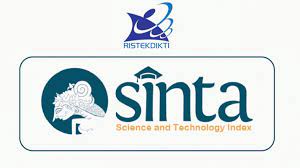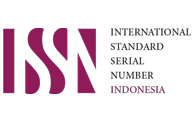The Application of Ecoprint Using Pounding Technique to Enhance Students' Creativity and Environmental Awareness
Keywords:
Ecoprint Technique, leaves, Eco-friendlyAbstract
This activity aims to introduce students to dyeing techniques on fabrics with natural colors using simple techniques and environmentally friendly materials. This activity was carried out at SMP Negeri 05 Tinggi Moncong, Gowa Regency, which was attended by all seventh grade students. The training method was conducted face-to-face and consisted of two stages: tutorial and hands-on practice. During the activity, students were not only taught ecoprint techniques but also given an understanding of the importance of preserving the environment. The final result of the ecoprint activity was a tote bag with natural motifs produced by the students themselves. This activity succeeded in providing meaningful learning experiences for students, as well as fostering a sense of environmental responsibility in the younger generation. It is hoped that similar activities can continue to be developed and implemented sustainably in various other places.
Downloads
References
DAFTAR PUSTAKA
Chew, K. W., Chia, S. R., Show, P. L., Yap, Y.
J., Ling, T. C., & Chang, J. S. (2018).
Effects of water culture medium,
cultivation systems and growth modes for
microalgae cultivation: A review. Journal
of the Taiwan Institute of Chemical
Engineers,91, 332–344.
https://doi.org/10.1016/j.jtice.2018.05.03
Apriyanti, E., & Alang, H. (2023). Edukasi Tanaman Obat Pada Siswa Sekolah Dasar Melalui Booklet TOGA. Malebbi: Jurnal Pengabdian Kepada Masyarakat, 1(1), 13-19.
Arifin, N. (2018). Bagaimana Hutan Indonesia Sebagai Paru-Paru Dunia di Masa Depan. https://www.goodnewsfromindonesia.id/2018/01/12/bagaimana-hutan-indonesia-sebagai-paru-paru-dunia-di-masa-depan.
Arif, W. F., & Marsudi. (2019). Uji Coba Warna Daun Sirih Merah dengan Teknik Pounding dan Steam. Journal of Visual Languages & Computing, 7(2), 73–80. https://jurnalmahasiswa.unesa.ac.id/index.php/va/article/view/29246
Chew, K. W., Chia, S. R., Show, P. L., Yap, Y.J., Ling, T. C., & Chang, J. S. (2018).Effects of water culture medium,cultivation systems and growth modes formicroalgae cultivation: A review. Journalof the Taiwan Institute of Chemical Engineers, 91, 332–344.https://doi.org/10.1016/j.jtice.2018.05.039
Dewi, Desak Nyoman Yunika. (2021). Penerapan Teknik Ecoprint Menggunakan Buah dan Sayur. Institut Seni Indonesia Denpasar. Journal of Fashion Design, 1(1), 152–158.
Manurung M. 2012. Aplikasi Kulit Buah Manggis (Garcinia Mangoana
L.) Sebagai Pewarna Alami pada Kain Katun Secara Pre-
Mordanting. Jurnal Kimi
Apriyanti, E., & Alang, H. (2021). Pemanfaatan Sampah Organik Sebagai Bahan Baku Pembuatan Pupuk Organik Cair Bagi Warga Desa Kindang Bulukumba. Jurnal Altifani Penelitian Dan Pengabdian Kepada Masyarakat, 1(4), 310-316.
Horodytska, O., Valdés, F. J., & Fullana, A.(2018). Plastic flexible films wastemanagement – A state of art review. Waste Management, 77, 413–425.https://doi.org/10.1016/j.wasman.2018.04.023
Husna, F. (2016). Eksplorasi Teknik Eco Dyeing dengan Tanaman sebagai Pewarna. E-Proceedin of Art & Design, 3(2), 280–293.
Irianingsih, N. (2018). Yuk Membuat ECOPRINT motif kain dari daun dan bunga.Gramedia Pustaka Utama
Kharisma V, Septiana U. (2019). Pelatihan Teknik Ecoprint untuk Guru Paud. Seni, Teknologi, Masyarakat. 2: 183-18
Manurung M. 2012. Aplikasi Kulit Buah Manggis (Garcinia Mangosana L.) Sebagai Pewarna Alami pada Kain Katun Secara Pre-Mordanting. Journal of Chemistry, 6(2), 183-190.
Saptutyningsih, E., & Wardani, D. T. K. (2019). Pemanfaatan Bahan Alami Untuk Pengembangan Produk Ecoprint Di Dukuh Iv Cerme, Panjatan, Kabupaten Kulonprogo. Warta LPM, 21(2), 18–26. https://doi.org/10.23917/warta.v21i2.6761
Saraswati, Ratna., Dewi., Ratri, Susilowati., Resturi RC. (2019). Buku Pemanfaatan Daun untuk Ecoprint dalam Menunjang Pariwisata. Depok: Departemenent of Geoography FMIPA UI.
Saraswati, T. J., & Sulandjari, S. (2018). Perbedaan Hasil Rok Pias Eco Print Daun Jati (Tectona grandis) Menggunakan Jenis dan Massa Mordan Tawas dan Cuka. E-Journal Unesa, 7(2), 1–7. https://jurnalmahasiswa.unesa.ac.id/index.php/jurnal-tata-busana/article/view/24723
Wahyuni TA, Mutmainah S. (2020). Karakteritik Karya Ecoprint Natural Dye pada Kulit di Rumah Batik Hardini Paper-Kediri. Jurnal Seni Rupa. 8(2), 194-207
Wanti, L. P., Somantri, O., Romadloni, A., &Tripustikasari, E. (2021). Optimization ofExtreme Programming Methods inPlastics Waste Management CompanyWebsites. JISA (Jurnal Informatika dan Sains), 4(2), 144–148.https://doi.org/10.31326/jisa.v4i2.1018
Wirawan, B. D. S., & Alvin, M. (2019). Teknik Pewarnaan Alam Eco Print Daun Ubi dengan Penggunaan Fiksator Kapur, Tawas dan Tunjung. Jurnal Litbang Kota Pekalongan, 17, 1–5. https://jurnal.pekalongankota.go.id/index.php/litbang/article/view/101
Vincentia Tunjung Sari, Djandjang Purwo Sedjati. (2019). Mix Teknik Ecoprint dan Teknik Batik Berbahan Warna Tumbuhan dalam Penciptaan Karya Seni Tekstil. Yogyakarta: Institute Seni Indonesia Yogyakarta.
Downloads
Published
Issue
Section
License

This work is licensed under a Creative Commons Attribution-ShareAlike 4.0 International License.
Licence
![]() Creative Commons license
Creative Commons license
Journal published by Larisa Multidisciplinary Service licensed under a Creative Commons Attribution-ShareAlike 4.0 International License
You are free to:
Share — copy and redistribute the material in any media or format
Adapt — remix, transform, and develop material for any purpose, even commercially
Under the following conditions:
Attribution — You must give appropriate credit, provide a link to the license, and indicate if any changes have been made. You may do so in any reasonable way, but not in any way that would imply that the licensor endorses you or your use.
Share Alike — If you mix, modify, or build upon the material, you must distribute your contributions under the same license as the original
No additional restrictions — you may not apply legal terms or technological measures that legally restrict others from doing anything the license permits













